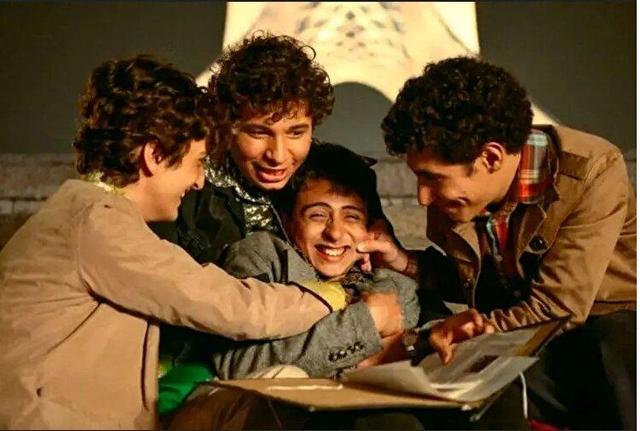Visa and mortgage restrictions may be limiting flow of Indian nationals to US
Visa and mortgage restrictions may be limiting flow of Indian nationals to US

Visa and mortgage restrictions are making the US a less attractive place to live for non-permanent residents, particularly Indians, who have historically made up the vast majority of H-1 B visa holders, according to multiple media reports on Wednesday.
Many Indians arrive in the US for higher education before taking up jobs there. However, visa restrictions on international students, high H-1B visa fees, and diminishing opportunities to enter the housing market are quickly making the US a less appealing destination for Indian students and professionals.
According to Open Doors data from the Institute of International Education, which tracks foreign students in the US, there were almost 332,000 Indian students in the US during the 2023-2024 academic year, an increase of 23.3 percent from the previous year.
They made up the highest amount of international students from any country, overtaking Chinese students for the first time.
Chinese students have formed the backbone of the international student body for at least a decade. No other country comes close to China and India in terms of the number of students going to the US.
But according to government statistics cited by CNN, there is a change in that trend: the preliminary number of Indian nationals arriving in the US on student visas in July and August fell by roughly 45 percent compared to the same time last year.
CNN reported that the 45 percent fall is significant, as August is traditionally the month that prospective students typically arrive before classes start because they are not allowed to enter the country 30 days before classes begin.
A climate of fear and repression at the higher education level was initially introduced by the tightening of student visas, which saw the increased vetting of prospective students' applications and social media accounts for “hostile attitudes” towards the US. Threats to deport students for expressing support for Palestine and the revocation of international student visas may have already had an impact on the number of Indian students entering the US.
Visa woes compounded
India is currently the most populous country in the world, with under-25s accounting for two-fifths of its population.
Traditionally, the US has been a top choice for Indian students because of its availability of good schools, promising job prospects, and English-speaking status.
However, a new executive order that Trump signed in September, which requires employers to pay a $100,000 fee for each employee they hire on an H-1 B visa, will limit the number of foreign workers companies can hire. There are several loopholes in the guidance given by the US Citizenship and Immigration Services (USCIS), but the fee is still widely viewed as a barrier.
According to a USCIS report, 72 percent of H1-B visas went to Indian nationals in fiscal year 2023. That means 279,386 visas out of the 386,318 available went to Indian nationals.
Most of the H1-B visas - 65 percent - were approved for tech-related occupations; 9.5 percent were approved for architecture, engineering and surveying occupations; 4.3 percent were approved for medicine and health professions, while 2.7 percent were approved for mathematics and physical sciences-related professions.
While tech companies are most likely able to afford to pick up the tab for H-1 B visas, this will likely affect the number of international workers and the experience level of workers they hire.
For Indian nationals planning to come to the US with a tech-related career in mind, even if they obtain a visa, there are concerns about how easy it will be to find a job after graduation.
For some, that means reconfiguring their plans and heading elsewhere, like Canada or Europe.
Even if prospective students find an employer willing to sponsor their H-1B visa, the climate is becoming increasingly inhospitable for non-permanent residents to put down roots, which includes housing.
Mortages to non-residents
The number of Federal Housing Administration (FHA) mortgages available to non-permanent residents, including H-1 B visa holders, is almost negligible, according to a Newsweek report published on Wednesday.
An FHA loan is a government-backed mortgage that helps low- to moderate-income families buy homes. They often require lower down payments and credit scores compared to conventional bank loans.
The Department of Housing and Urban Development announced in March that non-permanent residents will no longer be eligible for mortgages insured by the FHA from the end of May in order “to safeguard economic opportunities for US citizens and lawful permanent residents”.
A new report by John Burns Research and Consulting (JBREC) showed that the share of non-permanent residents securing the government-backed loans issued by the FHA was near zero percent in July and August compared to over six percent in April - the lowest numbers since records began.
Consequently, non-permanent residents are turning to other options, such as conventional financing. However, such loans require a US income, employment records, and a good credit score, which non-permanent residents might not have, or take time to build.
“Non-permanent residents can still use conventional financing to secure a mortgage,” Alex Thomas, one of the authors of the JBREC study told Newsweek. “However, FHA financing is often used because of its more lenient underwriting requirements. Non-permanent resident borrowers who are now locked out of FHA loans may not be able to qualify for conventional loans, and we have seen a dip in overall volume of mortgages going to non-permanent residents over the last several months.”













